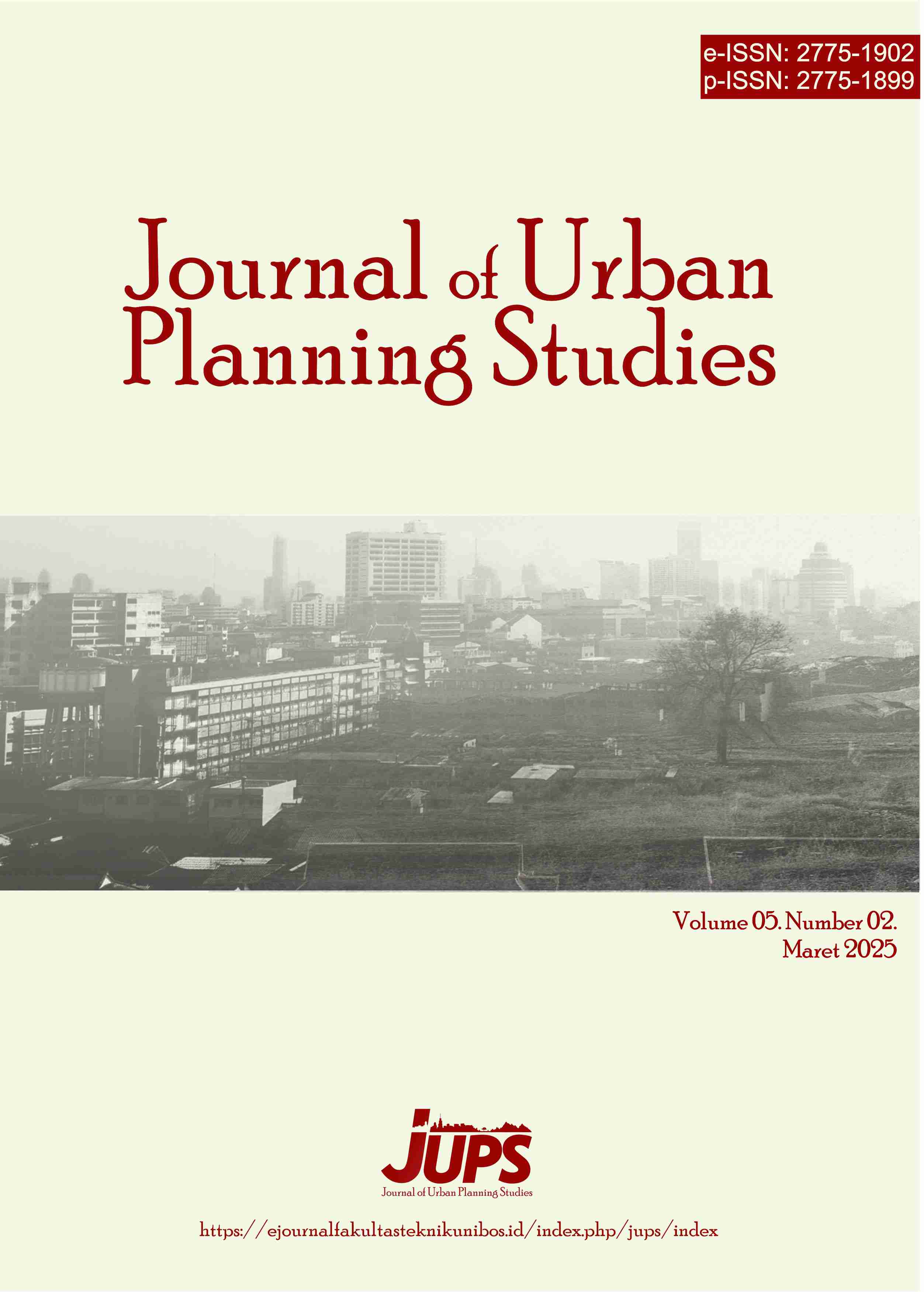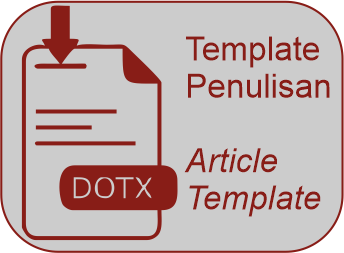The Influence of the Existence of Sudu Market on Land Use in the Surrounding Area
DOI:
https://doi.org/10.35965/jups.v5i2.639Keywords:
Perubahan Lahan, Penggunaan Lahan, Arahan Penataan, Penataan Pasar, Dampak Kawasan PasarAbstract
This study aims to analyze the influence of the existence of the sudu market on land use in the surrounding area by identifying patterns of land use change, identifying influencing factors, and formulating directions for structuring land use around the market. The research location is in Kambiolangi sub distrik, Alla sub-district. The method used in this research is a quantitative and qualitative approach. This research uses overlay analysis to see changes in land use that occur, then based on multiple linear regression analysis of factors that influence changes in land use around the market.
References
Agyeman, J., & Evans, B. (2019). Just sustainability and the emerging discourse of environmental justice in planning. Local Environment, 24(6), 523–536.
Aljoufie, M., & Tiwari, A. (2021). Urban growth and land use change analysis: A case study of Jeddah City, Saudi Arabia. Cities, 108, 102973.
Almutairi, N., Alshammari, N., & AlQahtany, A. (2020). Urban sprawl and land use change of peri-urban areas: A case study of the city of Riyadh, Saudi Arabia. Land Use Policy, 97, 104749.
Brody, S. D., Highfield, W. E., & Carrasco, V. (2020). Measuring the collective planning capabilities of local jurisdictions to reduce vulnerability to disaster risks. Landscape and Urban Planning, 193, 103681.
Chen, W. Y., Zhang, Y., & Wang, R. (2019). Urban green space use and sense of community: A study of the Beijing Olympic Forest Park. Cities, 94, 331–339.
Creswell, J. W., & Plano Clark, V. L. (2018). Designing and Conducting Mixed Methods Research (3rd ed.). SAGE Publications.
Fetters, M. D. (2020). The mixed methods research workbook: Activities for designing, implementing, and publishing projects. SAGE Publications.
Guetterman, T. C., Creswell, J. W., & Kuckartz, U. (2019). Using joint displays and MAXQDA software to represent the results of mixed methods research. Frontiers in Psychology, 10, 1443.
Hesse-Biber, S. N. (2020). Mixed Methods Research: Merging Theory with Practice. Guilford Press.
Jitsomboon, T., & Tiwari, P. (2019). Traditional markets and urban transformation in Thailand: Policy implications and strategies. Habitat International, 90, 102001.
Kombe, W. J. (2020). Land use dynamics and institutional challenges in urban and peri-urban land management in Africa. Urban Forum, 31(2), 127–145.
Kusumawardhani, K. A., Wibowo, A., & Rukmana, D. (2022). Integration of local market dynamics into spatial planning in Indonesia: A case from Central Java. Planning Practice & Research, 37(3), 323–340.
Latifah, S., Pramitasari, A., & Rochyani, L. (2020). Spatial structure transformation and its impacts on land use patterns in traditional market areas. IOP Conference Series: Earth and Environmental Science, 564(1), 012054.
Liu, J., Ma, W., & Yang, Y. (2021). Economic resilience of urban commercial centers during COVID-19: Evidence from Chinese cities. Cities, 119, 103407.
Ma, Q., Tang, X., & Liu, H. (2022). Urban land use transition and the driving mechanism in county-level cities: Evidence from China. Land, 11(5), 708.
Molina-Azorín, J. F. (2021). Mixed methods research in strategic management: Impact and applications. Journal of Business Research, 127, 686–696.
Pribadi, D. O., & Pauleit, S. (2020). The rural–urban interface in Indonesia: Impact of land use change on the transformation of peri-urban areas. Land Use Policy, 99, 104882.
Rachmawati, R., Widiastuti, A., & Fauzi, R. (2021). Spatial planning policy inconsistency and its impact on land use change in Indonesian metropolitan region. Sustainability, 13(8), 4129.
Rahman, M. M., & Zhang, C. (2021). Effects of land-use change on urban traffic congestion: A case study from Bangladesh. Transportation Research Part D: Transport and Environment, 94, 102799.
Sharma, R., & Singh, A. (2023). Revisiting spatial planning: A framework for inclusive and adaptive urban development. Sustainable Cities and Society, 90, 104292.
Susanti, H., Permana, D., & Yuliani, E. (2021). Revitalization strategy of traditional markets in urban areas: A case study from Indonesia. Journal of Urban Management, 10(1), 45–54.
Tang, Z., Hu, Y., & Li, M. (2021). Land use planning for sustainable development: Policy integration and spatial coordination in China. Land Use Policy, 108, 105577.
Udeh, K., & Ugwu, K. (2020). Impacts of market expansion on open space degradation in Nigerian cities. Environment and Urbanization ASIA, 11(1), 77–91.
Wu, J., Zhang, L., & Dong, Y. (2020). Land use change and socio-economic development: Spatial-temporal analysis and implications. Land Use Policy, 95, 104614.
Yusoff, M. M., Abdul Rahman, R., & Isa, S. M. (2022). Traditional markets and community bonding in Malaysian cities: A social capital perspective. Cities, 120, 103489.
Zhang, H., Liu, J., & Gao, W. (2023). Market-oriented urbanization and farmland conversion in China: Mechanisms and policy implications. Land Use Policy, 129, 106577.
Zhang, L., Zhang, Y., & Zhang, W. (2022). Sustainable spatial planning and land use management for urban development: A systematic review. Land Use Policy, 113, 105908.
Zhang, Y., Wu, W., & Liu, Y. (2021). Spatiotemporal analysis of land use/cover change and driving factors in the context of rapid urbanization: A case study of Hubei Province, China. Sustainability, 13(1), 128.
Downloads
Published
How to Cite
Issue
Section
License
Copyright (c) 2025 Syamsabila Nurdiana, Syafri, Jamilah Abbas, Arista Asrib

This work is licensed under a Creative Commons Attribution 4.0 International License.













